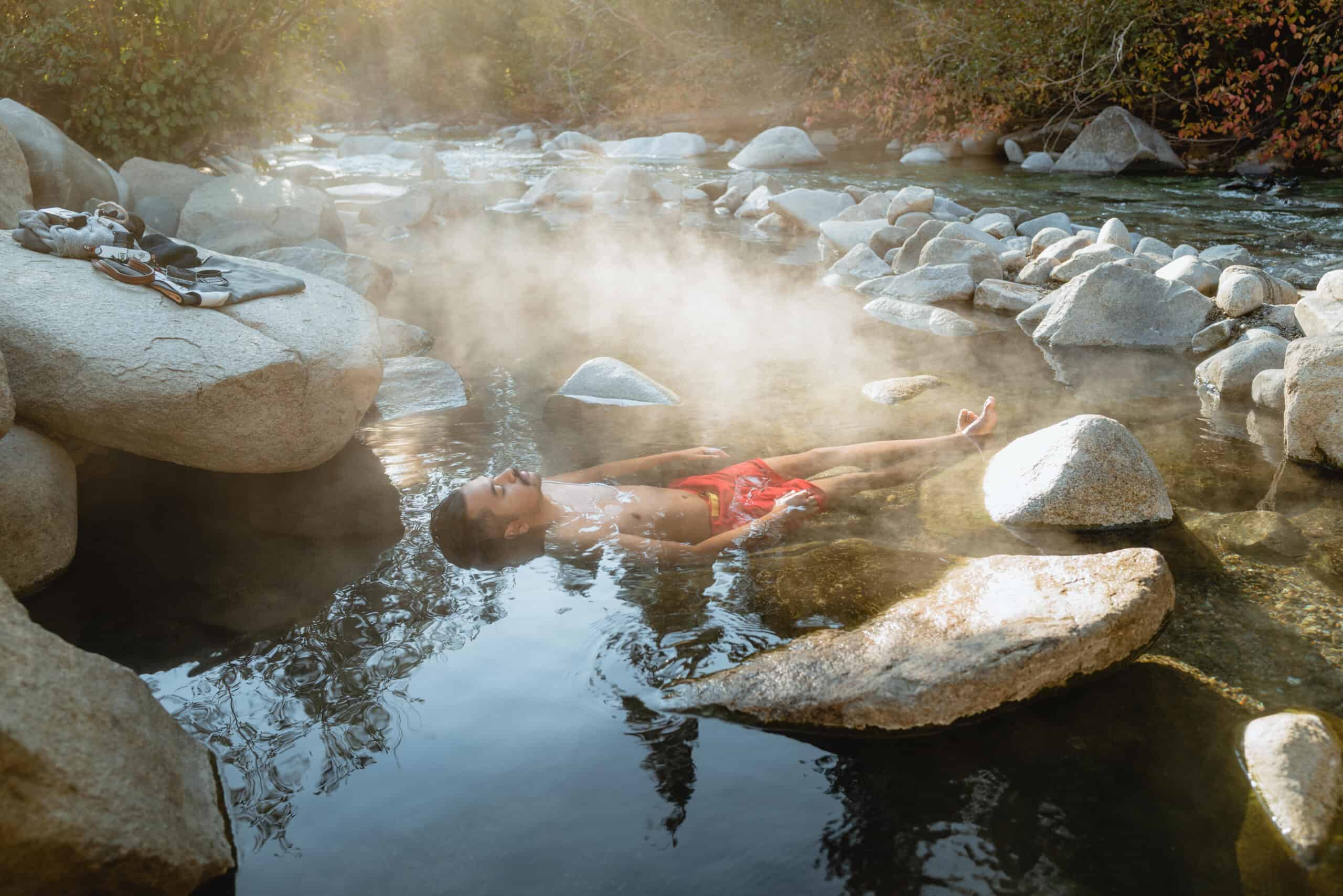Walking through the lush forests of Oregon, you come upon an opening in the woods and rock to find a geothermal spring.
You take off your pack, dip your toes into the water, and feel the warmth of the earth rush through your body.
One foot after the other, you sink deeper into the backcountry springs and begin your natural hot springs soak.
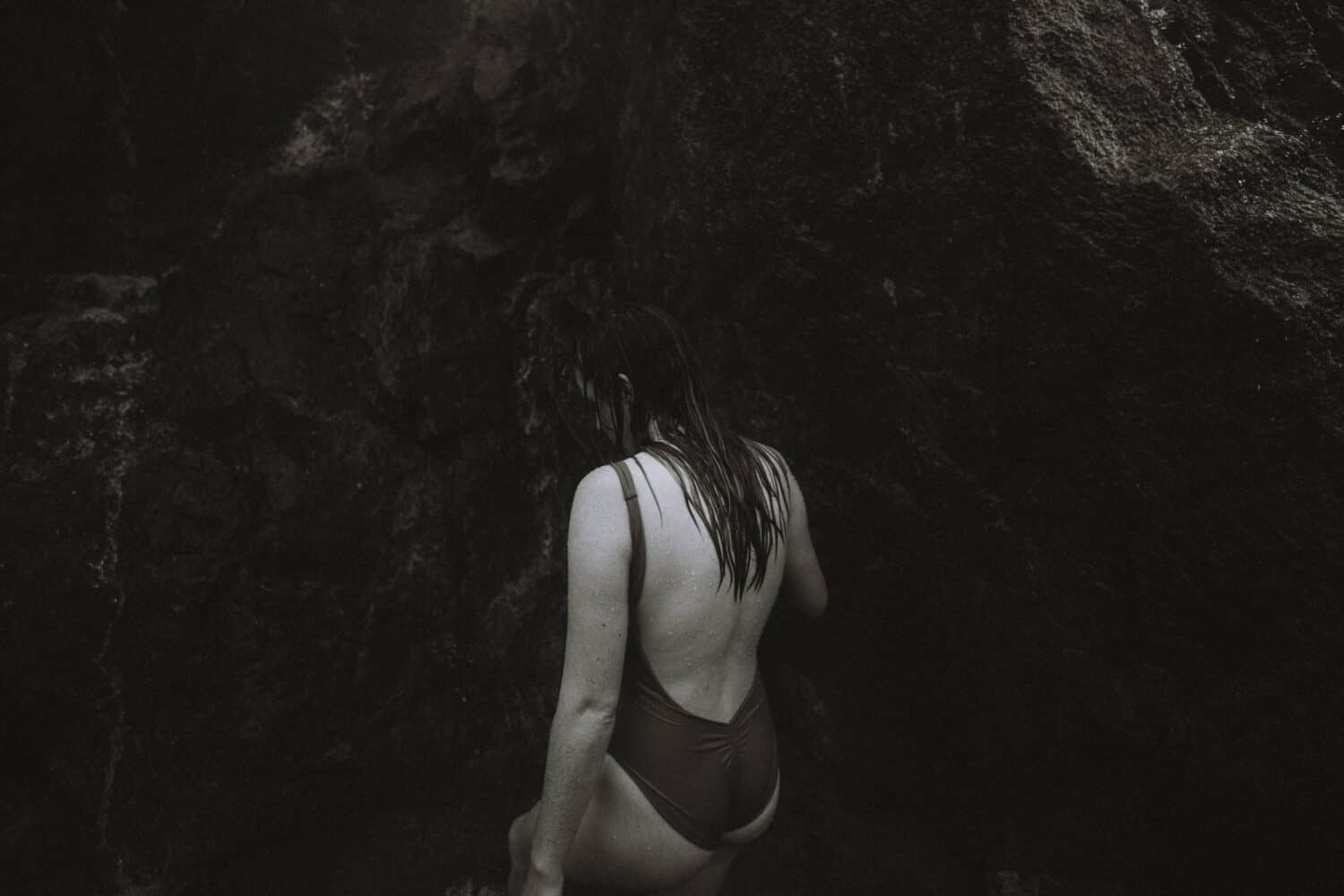
Whether you’re a geology whiz or just looking for a spa day, natural hot springs are beautiful wonders of nature that can be enjoyed by everyone!
Before reading, be sure to check out essential hot springs etiquette to preserve and maintain natural hot springs.
Read on for unique information about hot springs and natural hot springs fun facts!
Love fun facts? You might also like these posts!
> 34 Fun Facts About Washington State
> 35 Fun Facts About Oregon
> 52 Fun Facts About Idaho
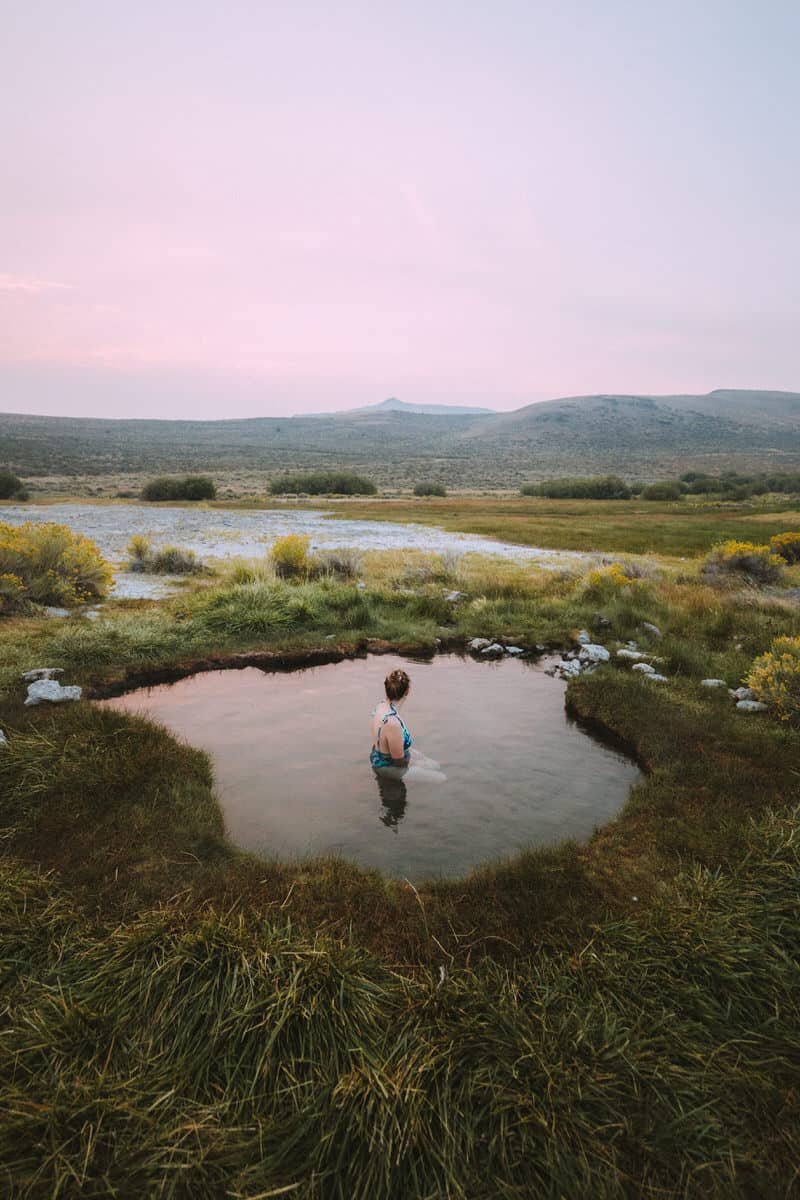
11 Unique Facts About Natural Hot Springs You Might Not Know
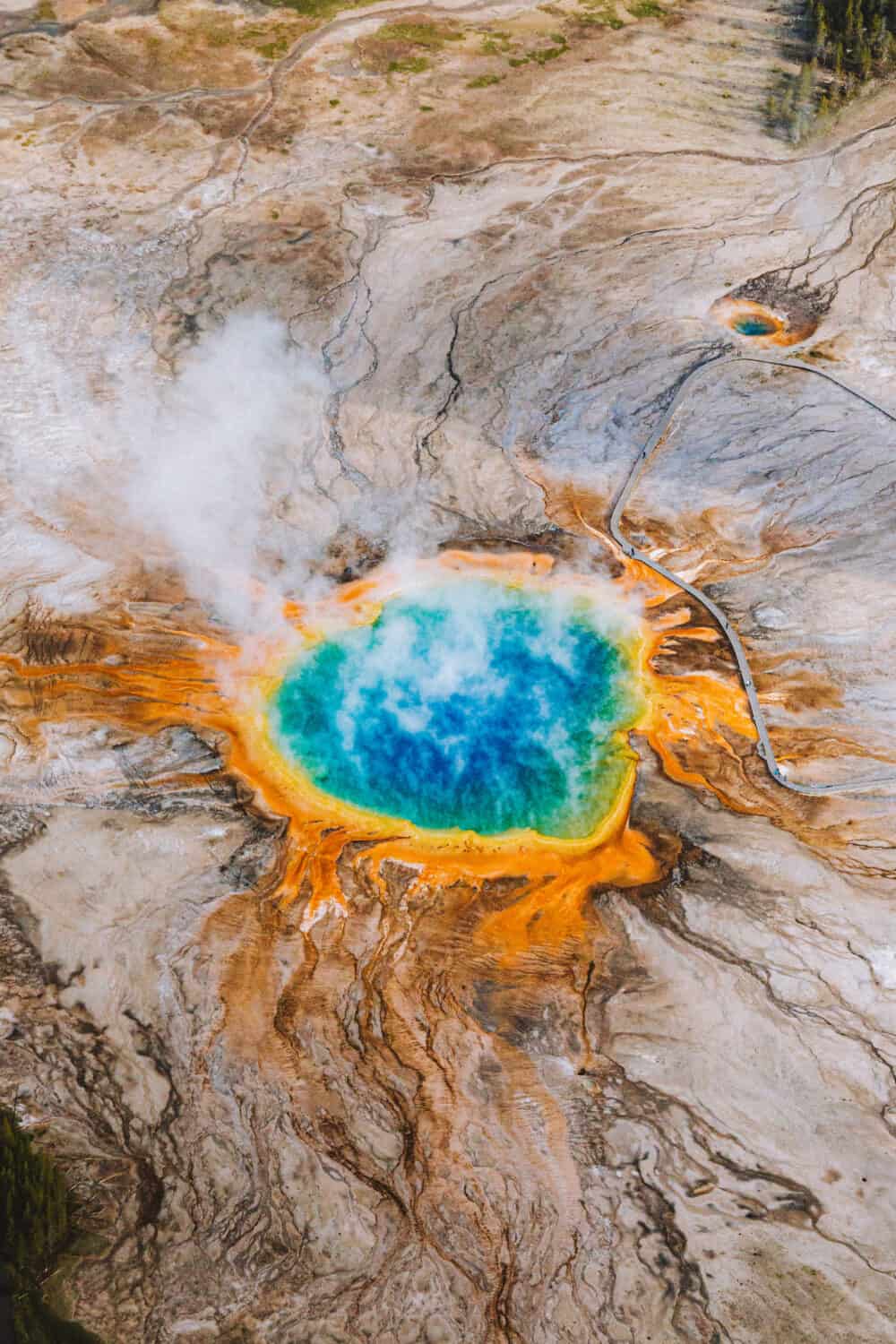
1. Some hot springs are too hot for humans to touch.
Because natural hot springs are created by subterranean volcanic activity, some hot springs are too hot for humans to touch!
Yellowstone National Park, for example, features hot springs with temperatures around 92°C (198°F), which is way hotter than what classifies pools as natural hot springs (95°F-104°F).
To add to these hot springs facts, Yellowstone’s natural hot springs host trillions of microorganisms called thermophiles that create masses of color in the pools of water despite the heat!
2. Japan has over 3,000 Onsens (hot springs)!
Due to the abundance of volcanic activity in the Pacific Ocean (The Ring of Fire), Japan has tons of natural hot springs and beautiful locations to get a good soak.
These resorts, traditional bathing locations, and hot springs are called Onsens.
Onsens must contain at least one of nineteen minerals, such as iron, sulfur, or hydrogen carbonate, and must be over 25°C to be classified as such!
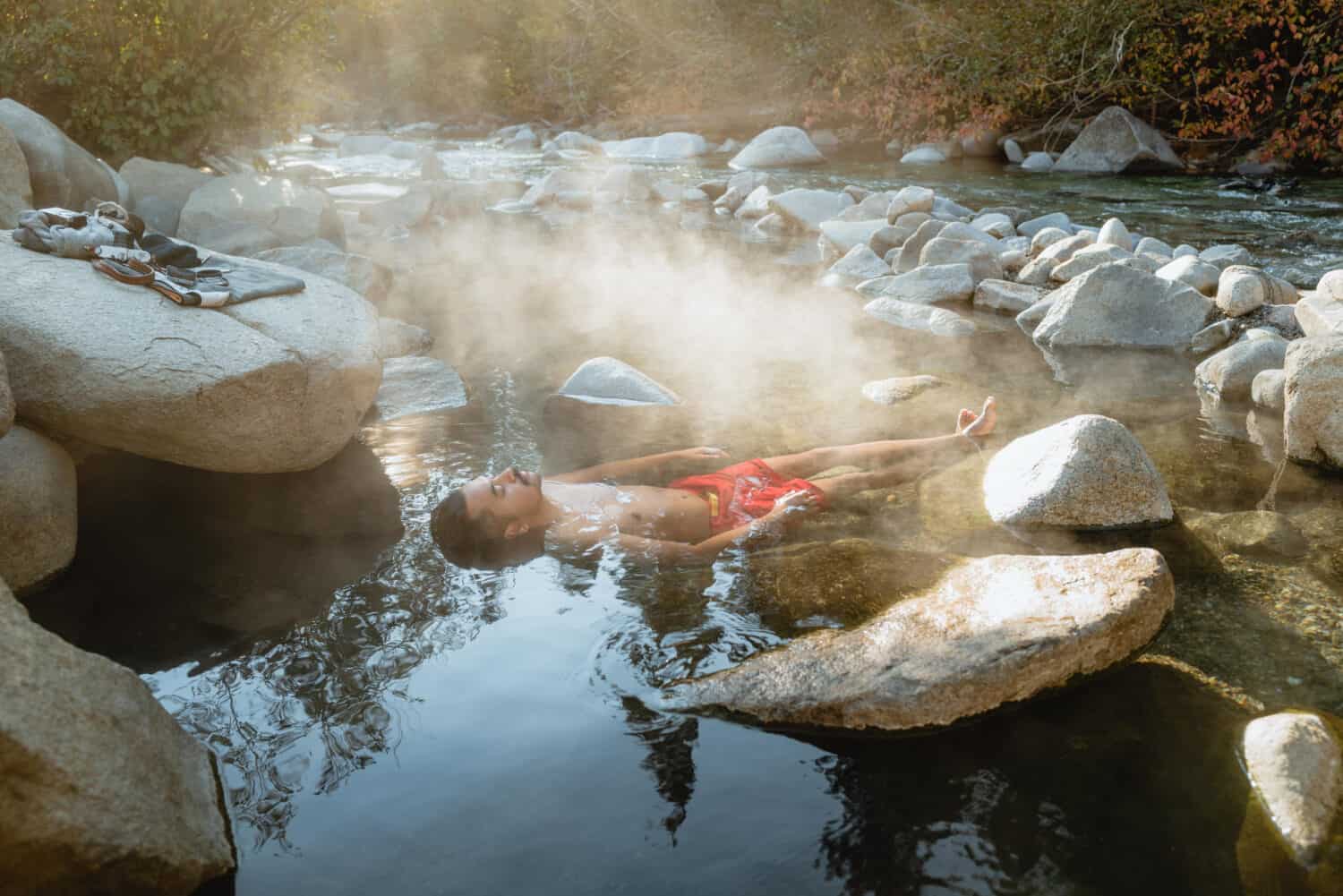
3. Natural hot springs have therapeutic benefits.
Not only are they relaxing, but hot springs have health benefits that are completely natural!
These include:
- Hot springs boost blood circulation due to the variety of minerals found in the water, such as calcium and sodium bicarbonate, which increase the circulation of oxygen flow.
- Natural hot springs can relieve pain, because the heat dulls pain and blocks pain receptors. The body’s buoyancy in water also supports the body’s joints when in natural hot springs.
- The warm water of hot springs reduces stress by relaxing tense muscles. This can promote deeper sleep as well!
- Due to silica in the water, hot springs can smooth and soften dry skin. The sulfur contained in the water can also relieve conditions like eczema and psoriasis.
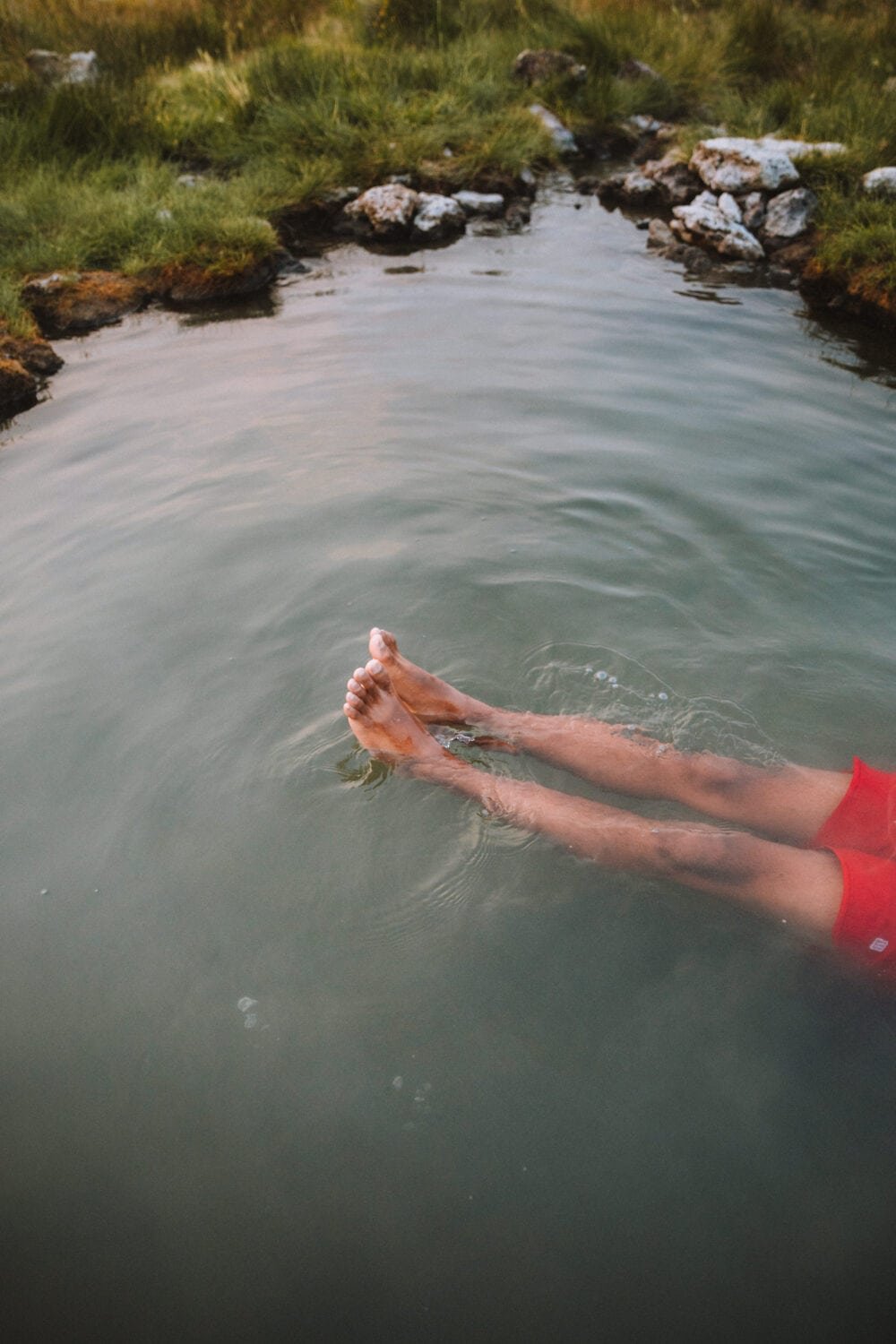
4. The mineral makeup of hot springs has healing benefits.
Dissolved minerals found in geothermal water allow for transdermal absorption, which is where helpful minerals soak into the skin!
These include:
- Boron, calcium, sodium, sulfate, lithium, potassium, fluoride, chloride, magnesium, manganese, iron, zinc, phosphate, silica, and nitrogen.
These minerals strengthen bones, teeth, nails, and hair, aids in brain function, elevate mood, and produce a sense of calm.
The also promote heart and kidney health, regulate blood pressure and pH in the body, increase energy levels, and resistance to disease (among many more benfits!).
5. Hot Springs National Park has 47 unique hot springs.
Hot Springs National Park in Garland County, Arkansas unique for its accessibility (the natural hot springs are right in the middle of town!) and its historic bathhouses.
This area is abundant in hot springs information and facts about hot springs, because the attractions are integral to the community in Arkansas!
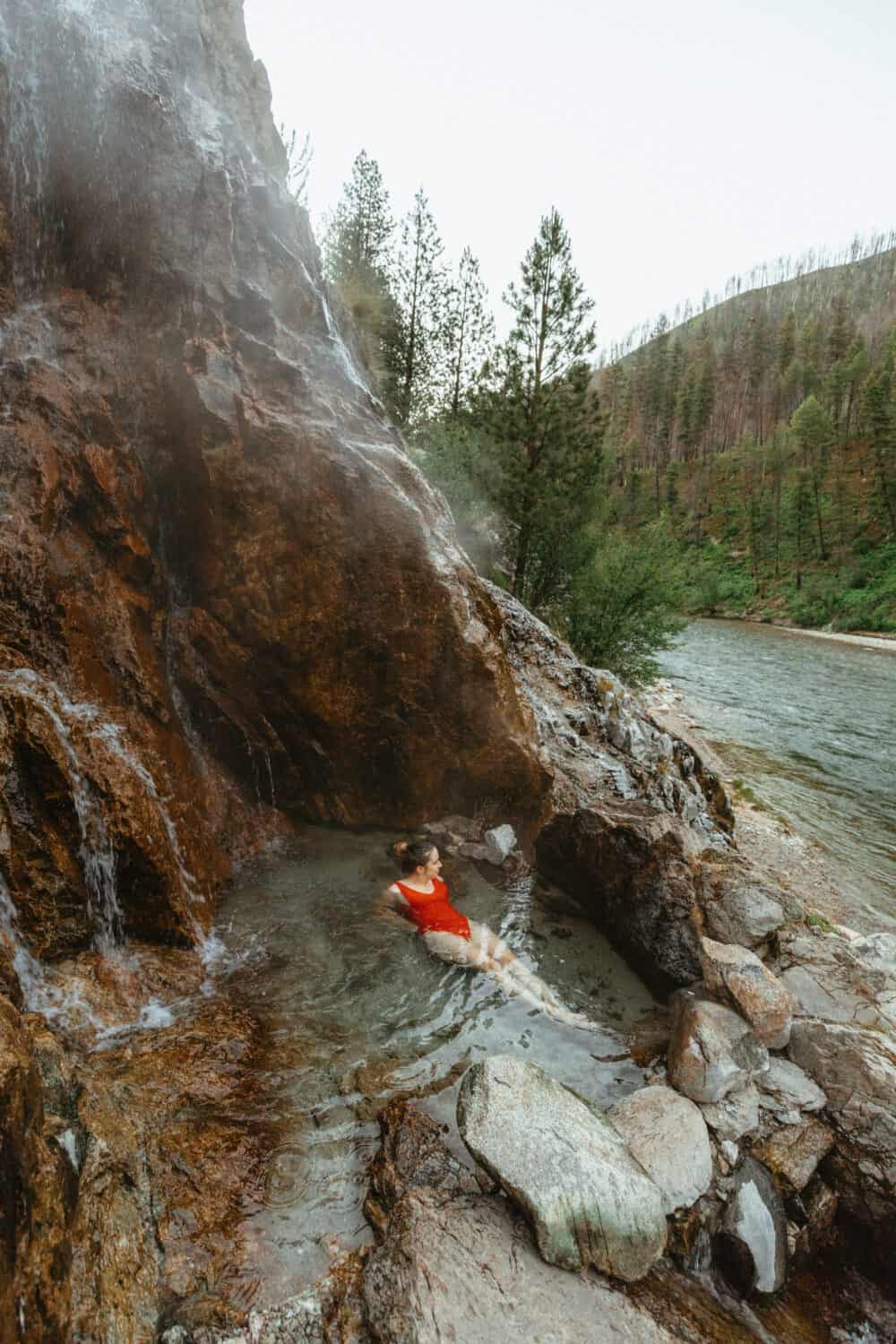
6. The Idaho Batholith heats natural hot springs.
The Idaho Batholith is a geologic formation made of granite that covers about 90 percent (15,400 square miles!) of the Boise National Forest. That’s why there are more than 200 natural Idaho hot springs!
This formation that dominates southern Idaho’s scenery was created from geologic activity that pushed molten rock to the surface.
The combination of pressure from fault lines, radioactive elements in minerals, and heat in the granite warms pools of water to create natural hot springs.
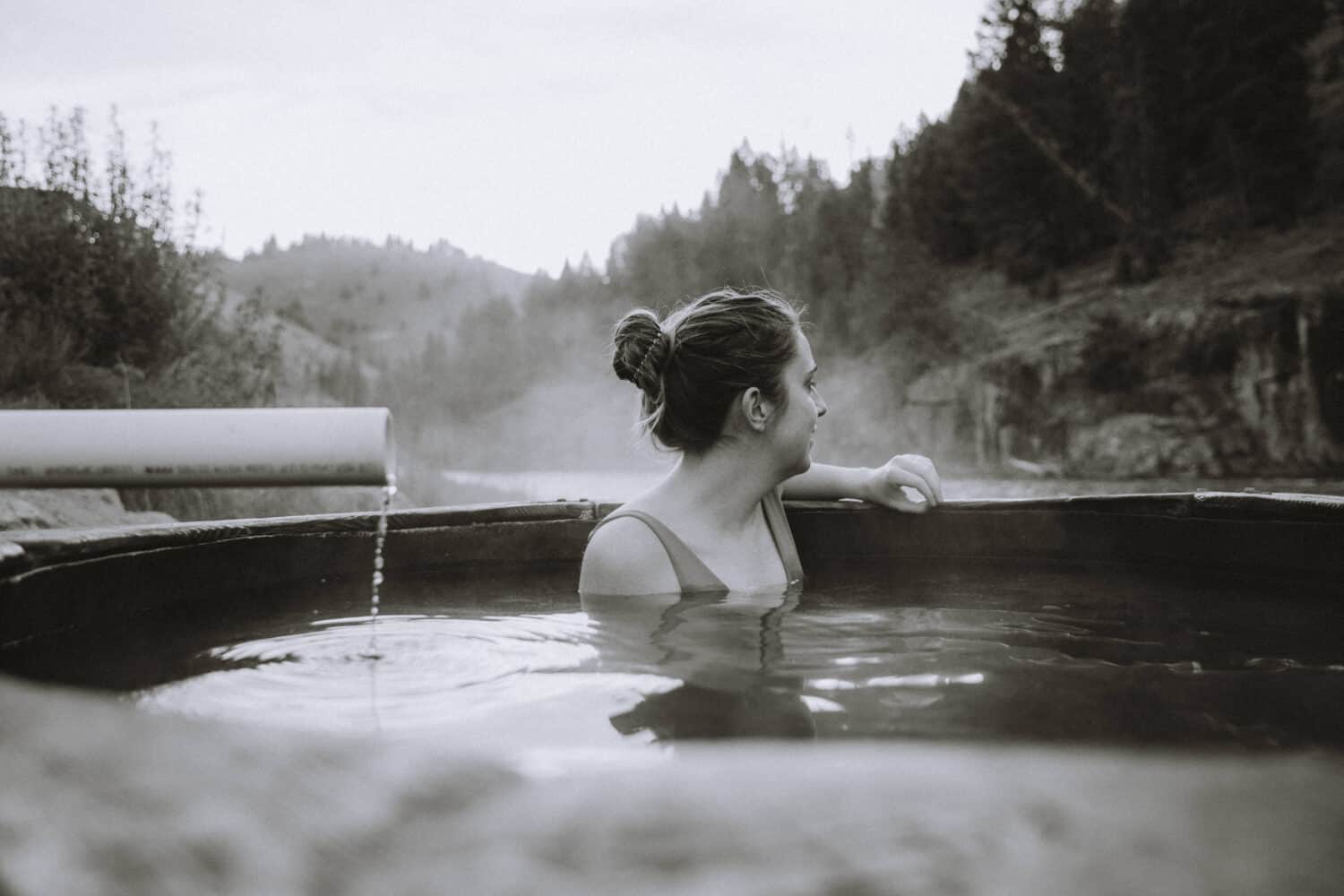
7. Balneology is the study of treatment of disease by bathing.
Balneology primarily focuses on the arts, sciences, and cultures of natural mineral waters.
Those studying balneology examine how drinking, soaking, bathing, steaming, and inhaling mineral waters affect the health and wellness of human beings!
The Springs in Idaho City (commercial), and Bagby Hot Springs in Oregon (natural) both focus on this particular experience at their hot springs.
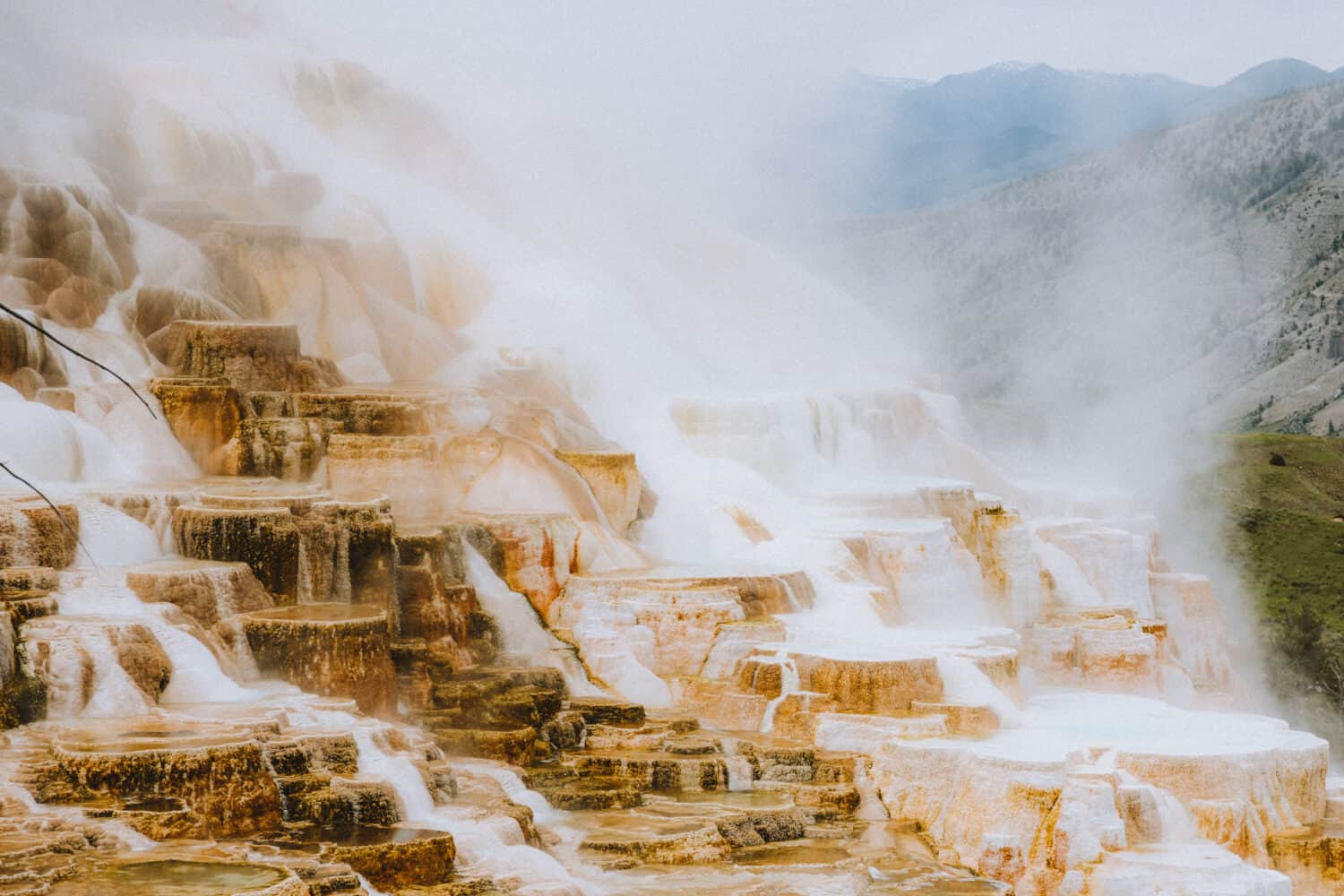
8. Hot springs come in different colors.
The hydrothermal features of natural hot springs cause microorganisms to create variations in water color.
In Yellowstone National Park, thermophiles that thrive in extreme heat group together to produce brilliant blues, yellows, and pinks!
Grand Prismatic Spring at Midway Geyser Basin is an excellent example of such microbes that create outstanding natural phenomena!
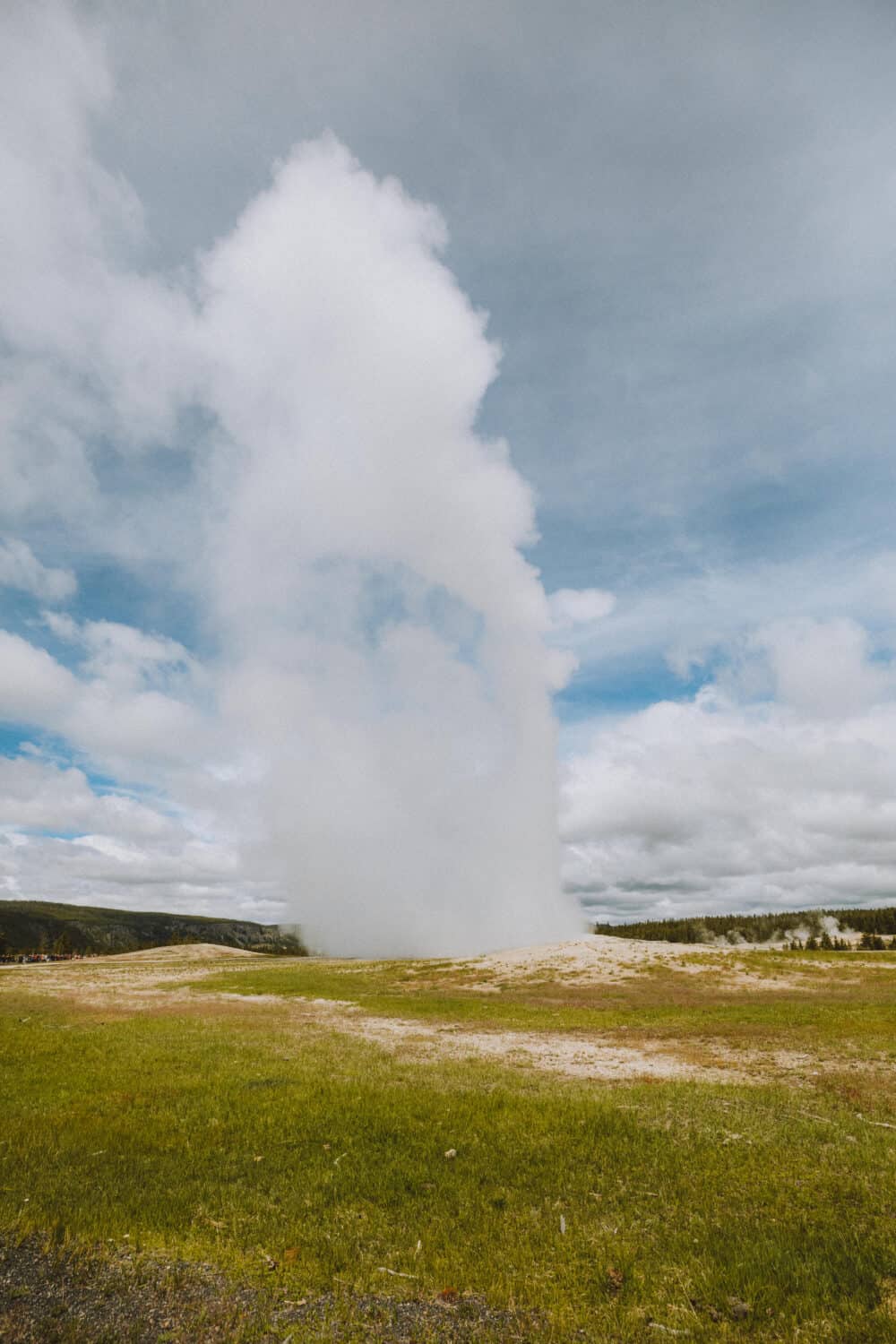
9. Hot springs become geysers with pressure.
Hot springs are formed by hot water rising through a crack to the Earth’s surface.
When the water that is heated by magma gets trapped underground, pressure and heat builds up so much that the superheated water bursts out onto the surface, which creates a geyser! (Like Old Faithful in Wyoming!)
Unlike natural hot springs that bubble hot water to the surface, geysers erupt and expel water at extreme heights!

10. Idaho has over 200 natural hot springs.
These natural hot springs in Idaho bubble up near wild rivers or are built into blissful sanctuaries for relaxation.
Some of our favorite Idaho hot springs include: The Springs, Kirkham Hot Springs, Stanley Hot Springs, Goldbug Hot Springs, and more!
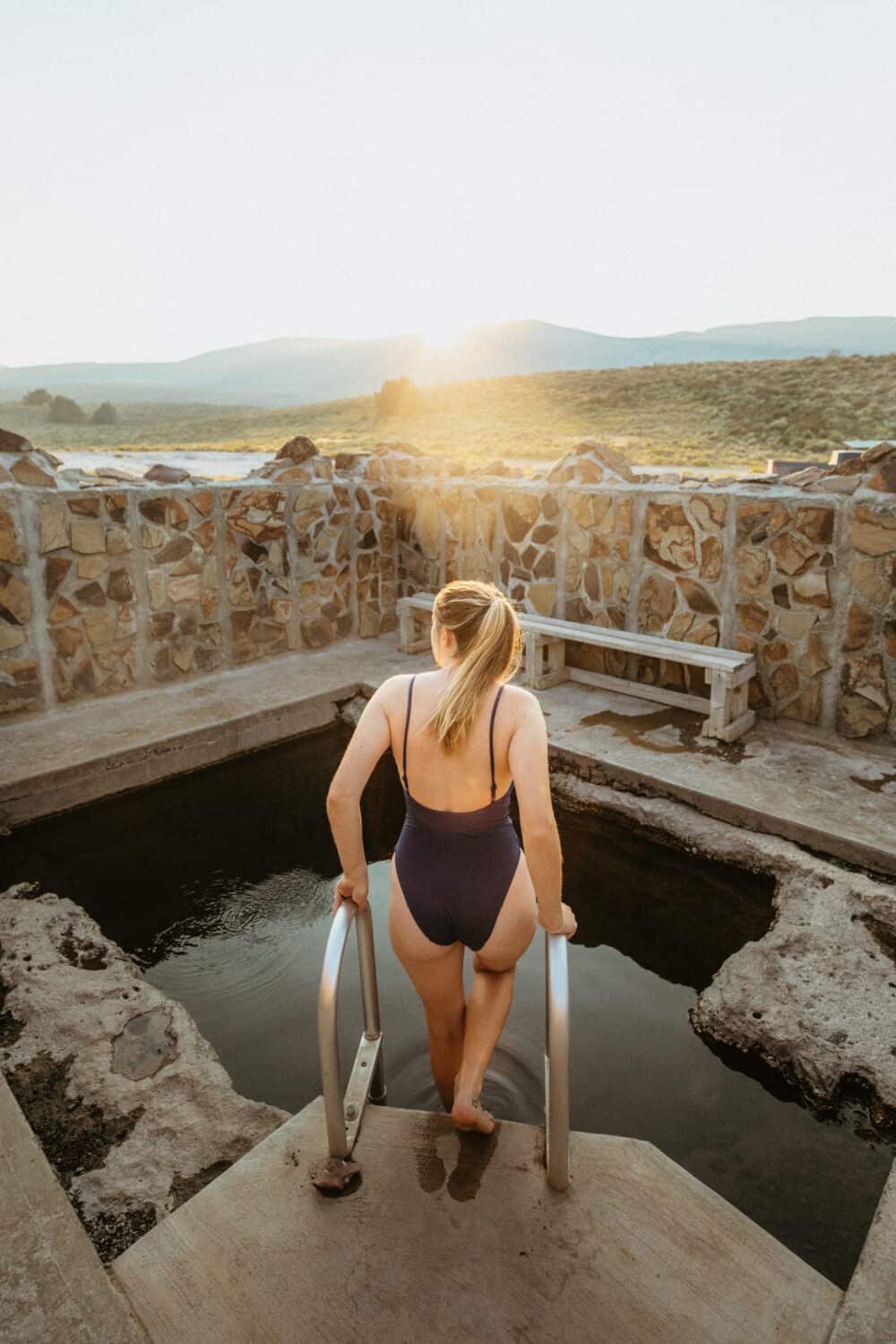
11. There are 37 mapped hot springs in Oregon.
The hot springs in Oregon are found among the Cascade Mountains, Southern Oregon, and in the high deserts of Eastern Oregon.
Some of Oregon’s hot springs are commercially owned and follow a more resort-style approach while others require a bit of a hike to reach!
To add to these natural hot springs facts, these natural hot springs in Oregon are a part of the state’s identity and provide excellent opportunities for an awesome outdoor adventure!
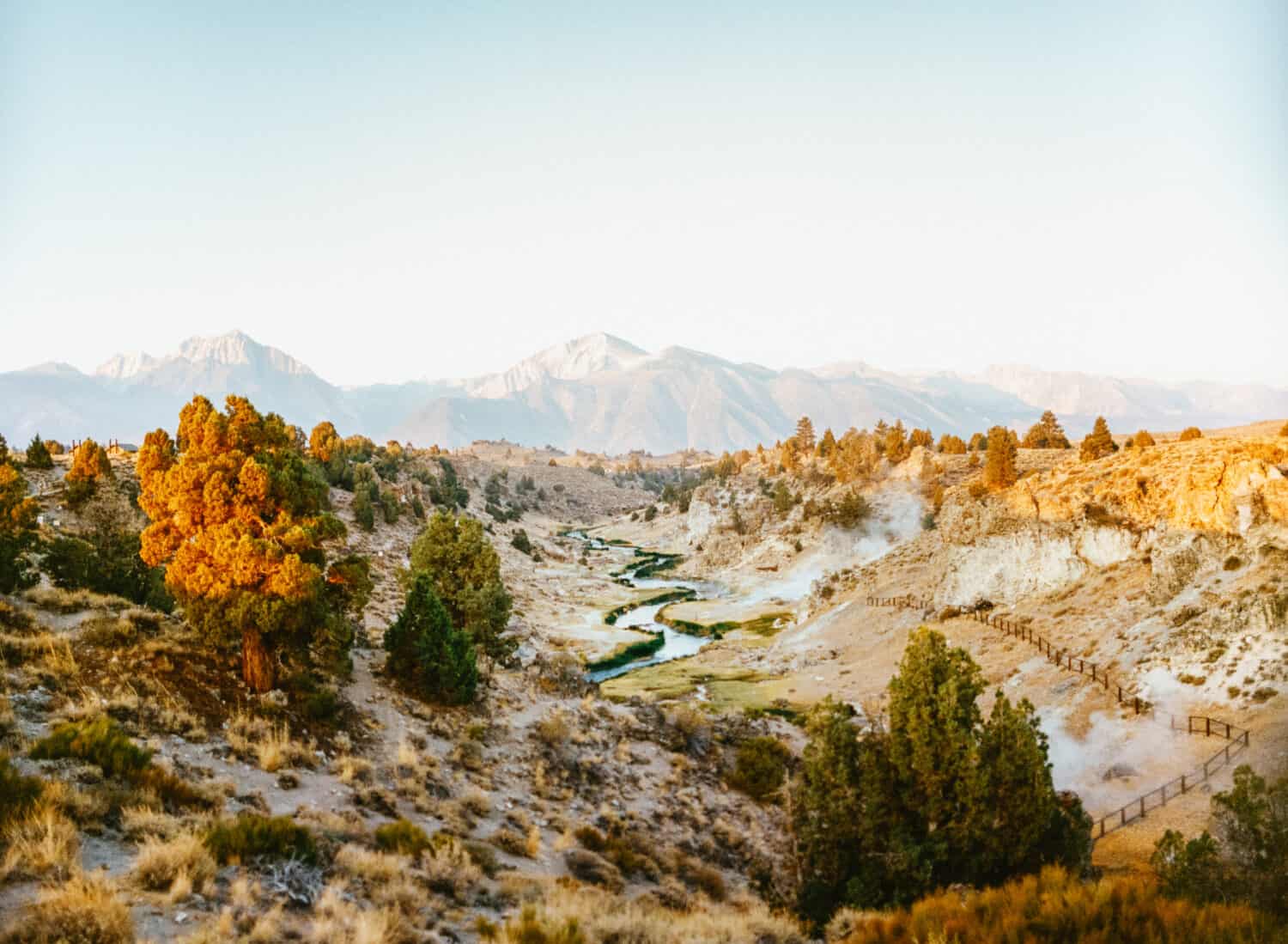
FAQs about Natural Hot Springs
Looking to learn more facts about natural hot springs? Here are some of the most common questions people ask!
What minerals are found in hot springs?
Common minerals found in natural hot springs include boron, calcium, sodium, sulfate, lithium, potassium, fluoride, chloride, magnesium, manganese, iron, zinc, phosphate, silica, and nitrogen.
These minerals found in natural hot springs can have numerous health benefits and add to the relaxing experience of a good soak!
What are the benefits of natural hot springs?
The benefits of soaking in natural hot springs include boosting blood circulation, relieving pain, relaxing tense muscles to reduce stress, and smoothing skin.
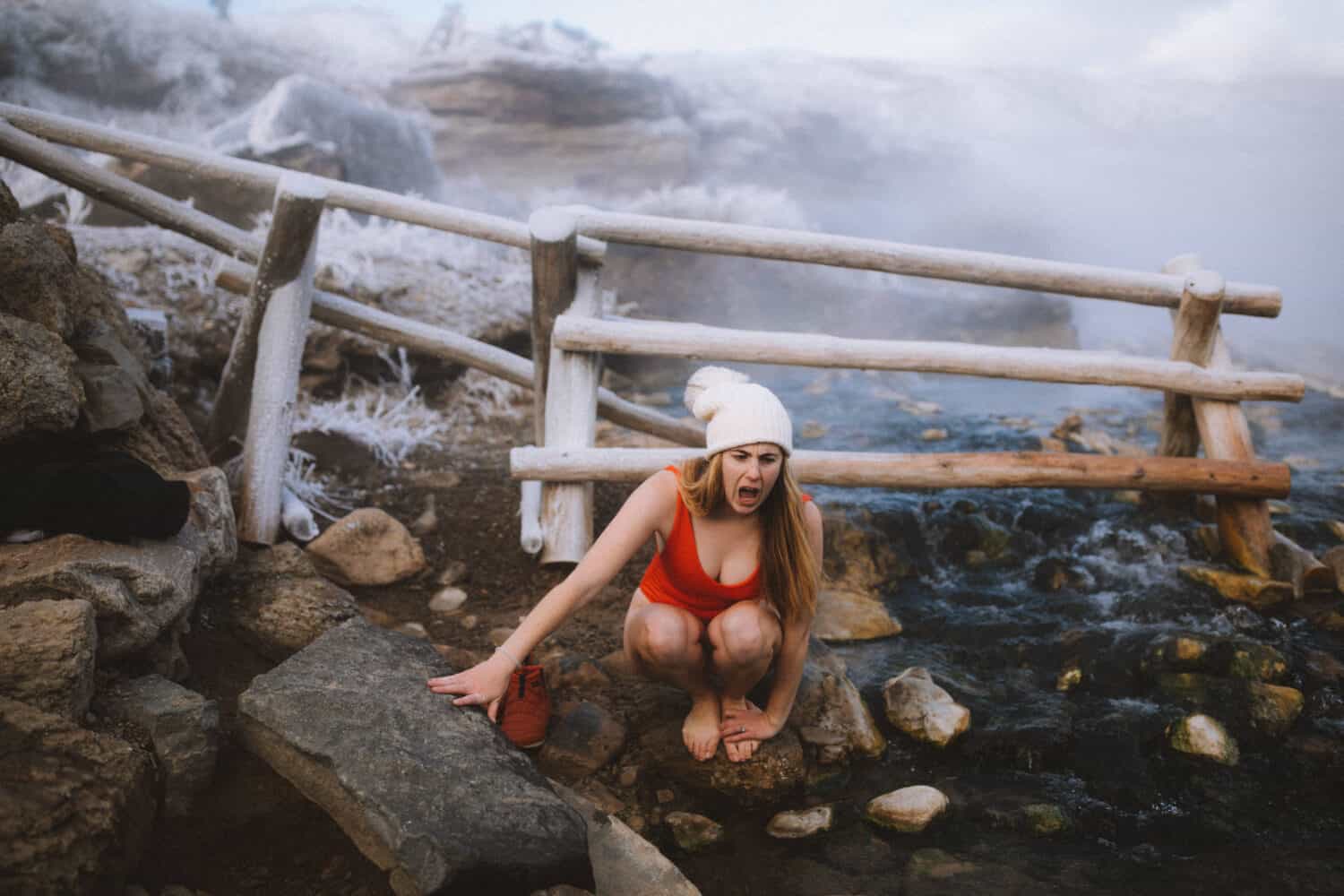
What are the side effects of natural hot springs?
While natural hot springs are often safe for humans to visit, it’s important to be prepared and know potential side effects and risks before having your next soak.
Some natural hot springs can be too hot for humans due to extreme temperatures, even if the water feels good.
This is true for some pools at the source of springs, like the high temps at Bonneville Hot Springs or the Boiling River in Wyoming.
Hot–or boiling–water can burn skin, and the high temperatures of hot springs can indicate that it could be a geyser.
There are some hot springs that also have high acidity, which can also burn your eyes or skin.
Finally, natural hot springs contain microorganisms that can lead to waterborne diseases, such as infection, skin rash, and gastrointestinal illness.
Some hot springs can also be home to red spider mites, which are commonly found at Rocky Canyon Hot Springs in Idaho.
If you’re unsure which natural hot springs are safe to visit, check to see if it is a named location and if there are any notifications for caution.
It’s recommended to speak with your physician before visiting natural hot springs. It’s also not recommended to soak in hot springs if you have any heart conditions, or are pregnant.
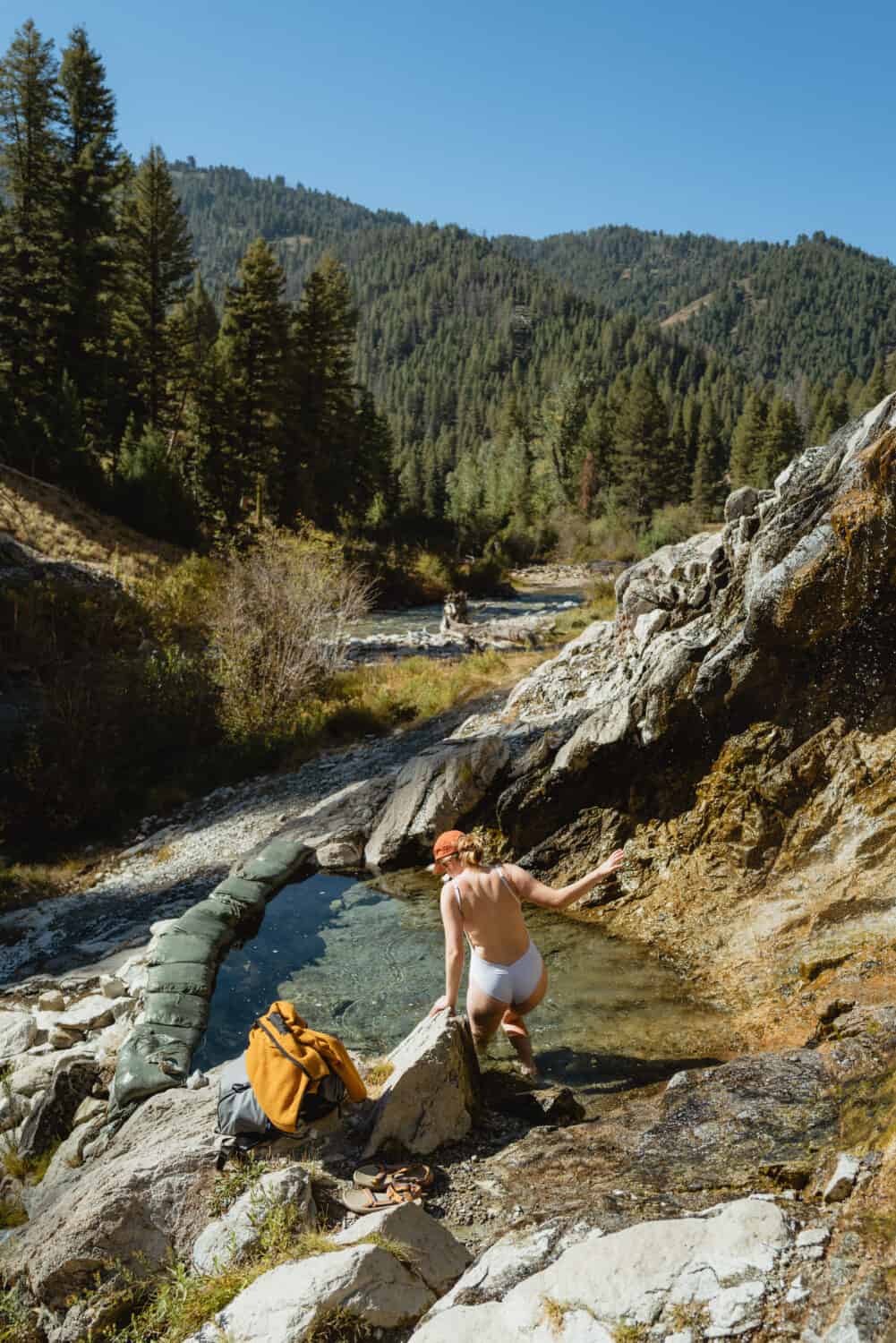
Are natural hot springs safe?
Visits to natural hot springs are a safe outdoor activity when following guidelines and hot springs etiquette.
When visiting natural hot springs, it is important to heed warnings about where you may and may not be or walk in the hot springs.
Don’t ignore safety barriers, as they are there for your own safety and allow the areas to be enjoyed by others for years to come!
To be extra safe, a few other tips include:
- Don’t go to hot springs alone
- Don’t submerge your head
- Avoid swallowing water
- Pay attention to how long you are in the hot springs
- Get out at the first sign of illness or burning (and contact a health provider!)
- Have plenty of fresh, cold water in a bottle nearby.
Finally, don’t forget to download our free hot springs packing list before you go on your next trip!
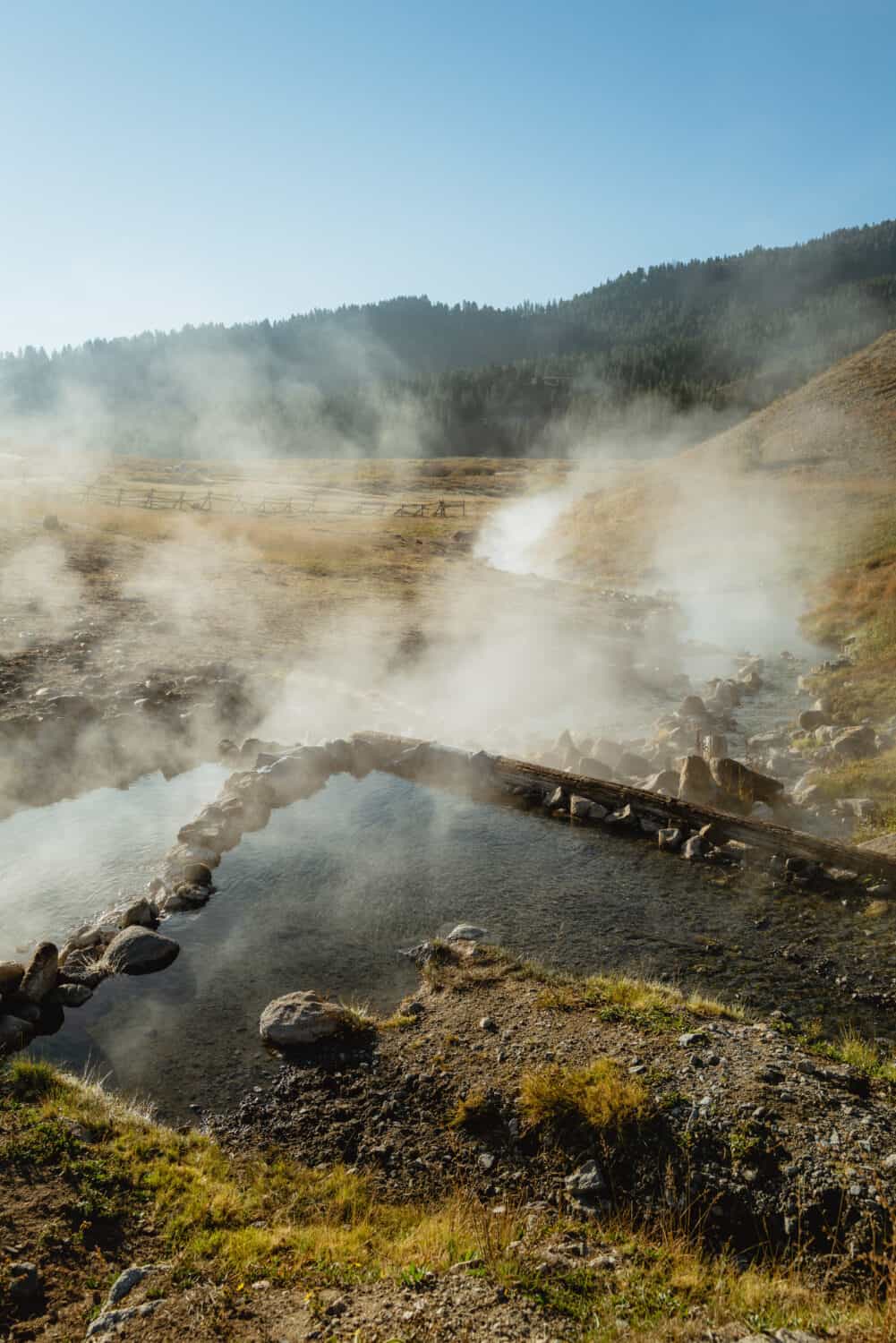
How are hot springs formed?
Natural hot springs are formed when geothermally heated water rises through a crack in the Earth’s crust to the surface.
The water heated by magma creates pools of water, some of which are safe for people to visit while others are hotter than boiling!
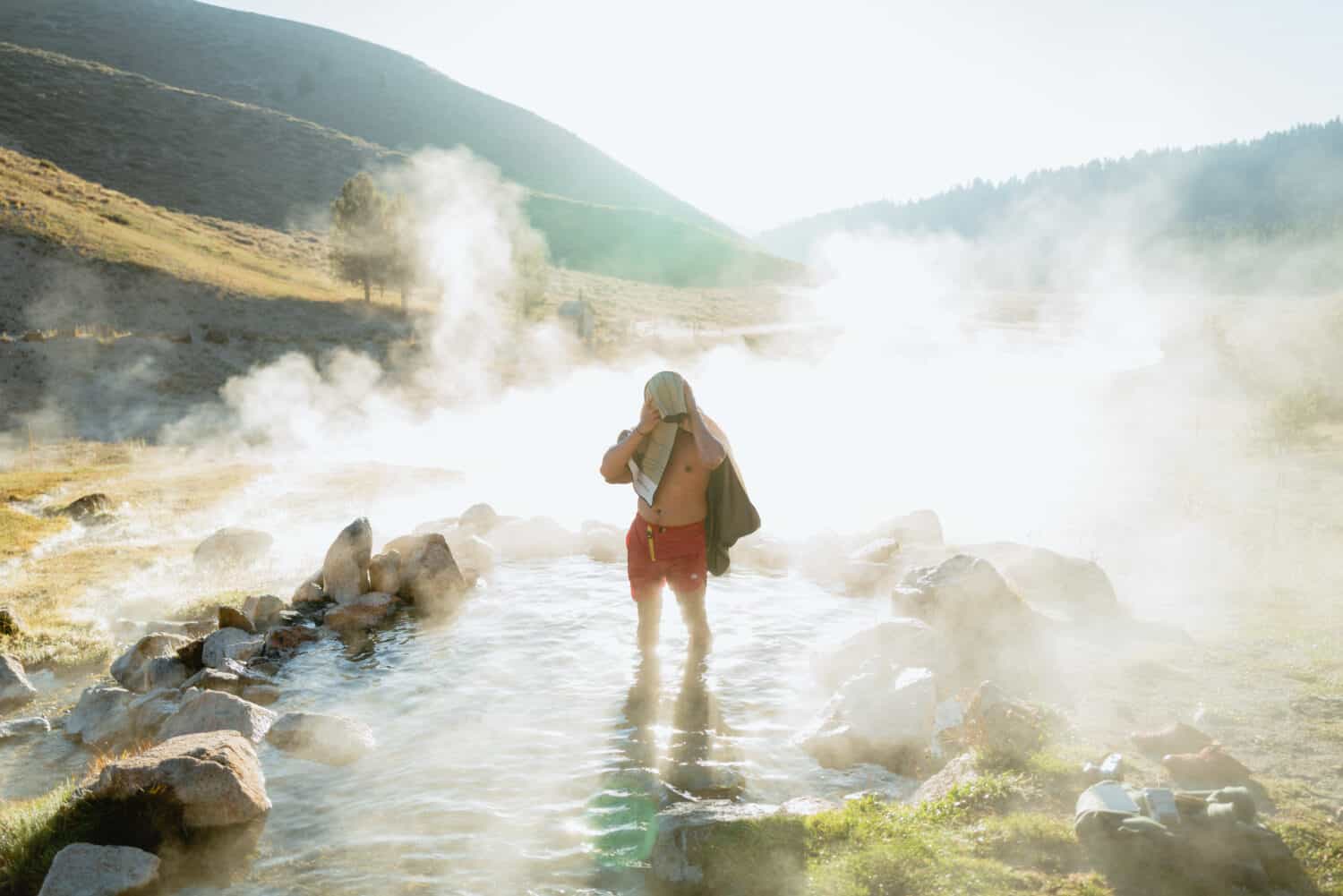
Why are hot springs hot? Where is the heat source?
Hot springs are hot because rainwater or groundwater is heated by magma–or molten rock–underneath the Earth’s surface.
Magma is the heat source for the water in natural hot springs, and because hot water is less dense than cold water, it rises to the Earth’s surface!
What are the cultural uses of hot springs around the world?
Soaking in natural hot springs has a long-standing history in different cultures around the globe, as hot springs are present on all of the seven continents!
The region around Japan commonly uses hot springs called Onsens.
Historically, Japanese Onsens were used by BuddhistBhuddist monks for purification rituals, but they are now used as relaxation destinations, public bathing, and healing.
European Kukorts are also natural hot springs that have typically been used for healing, reducing stress, and treating chronic conditions.
What’s the difference between a geyser and a hot spring?
Hot springs are natural pools of water that are above 95°F-104°F and can be used safely by humans.
Geysers are much hotter than hot springs, cannot be used by humans, and can erupt due to the pressure and heat of the water below the Earth’s surface!
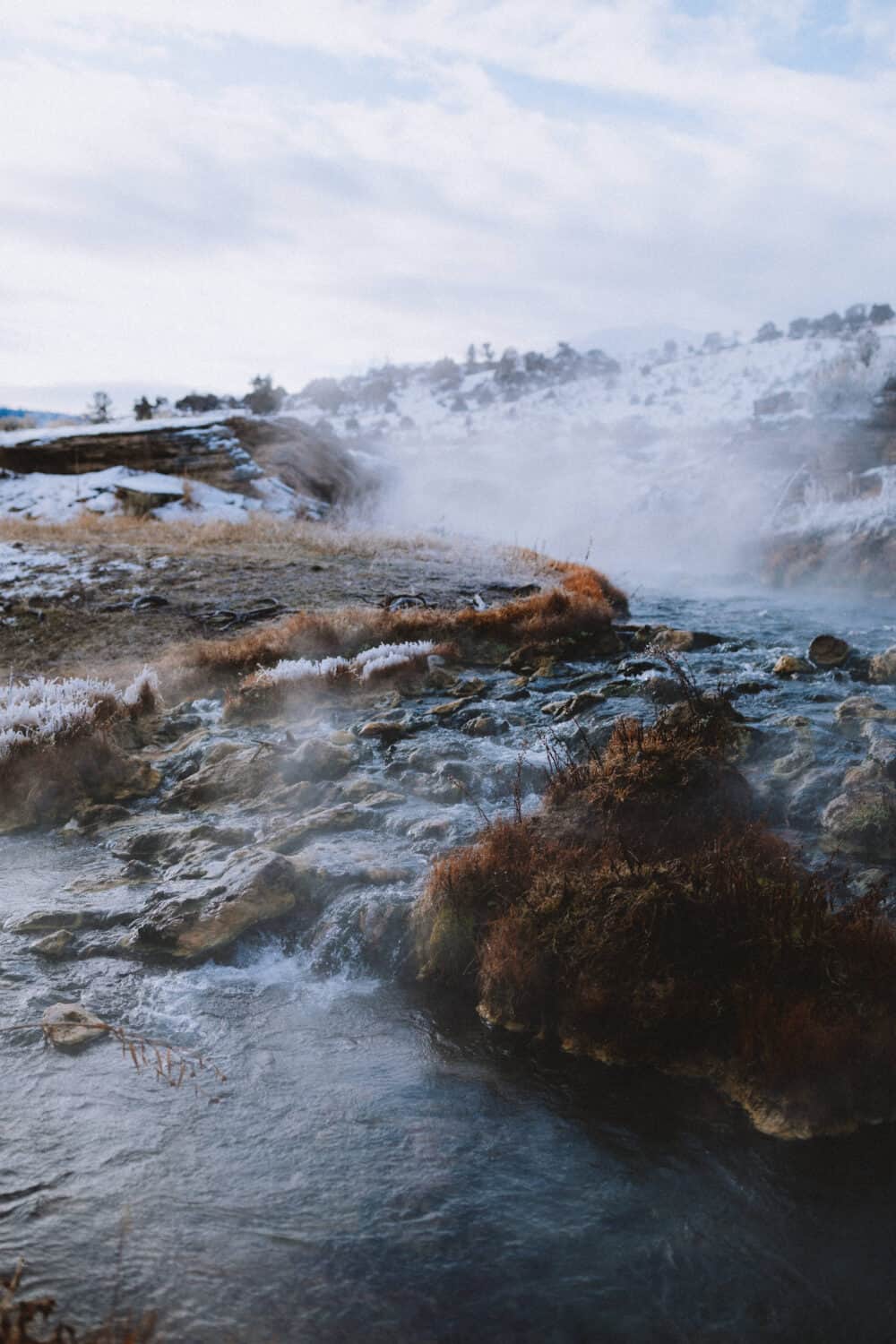
Do hot springs freeze in the winter?
While it depends on the temperatures throughout the year, hot springs do not generally freeze in the winter.
In fact, many hot springs stay very warm throughout the winter and can be an enchanting outdoor activity among the snow!
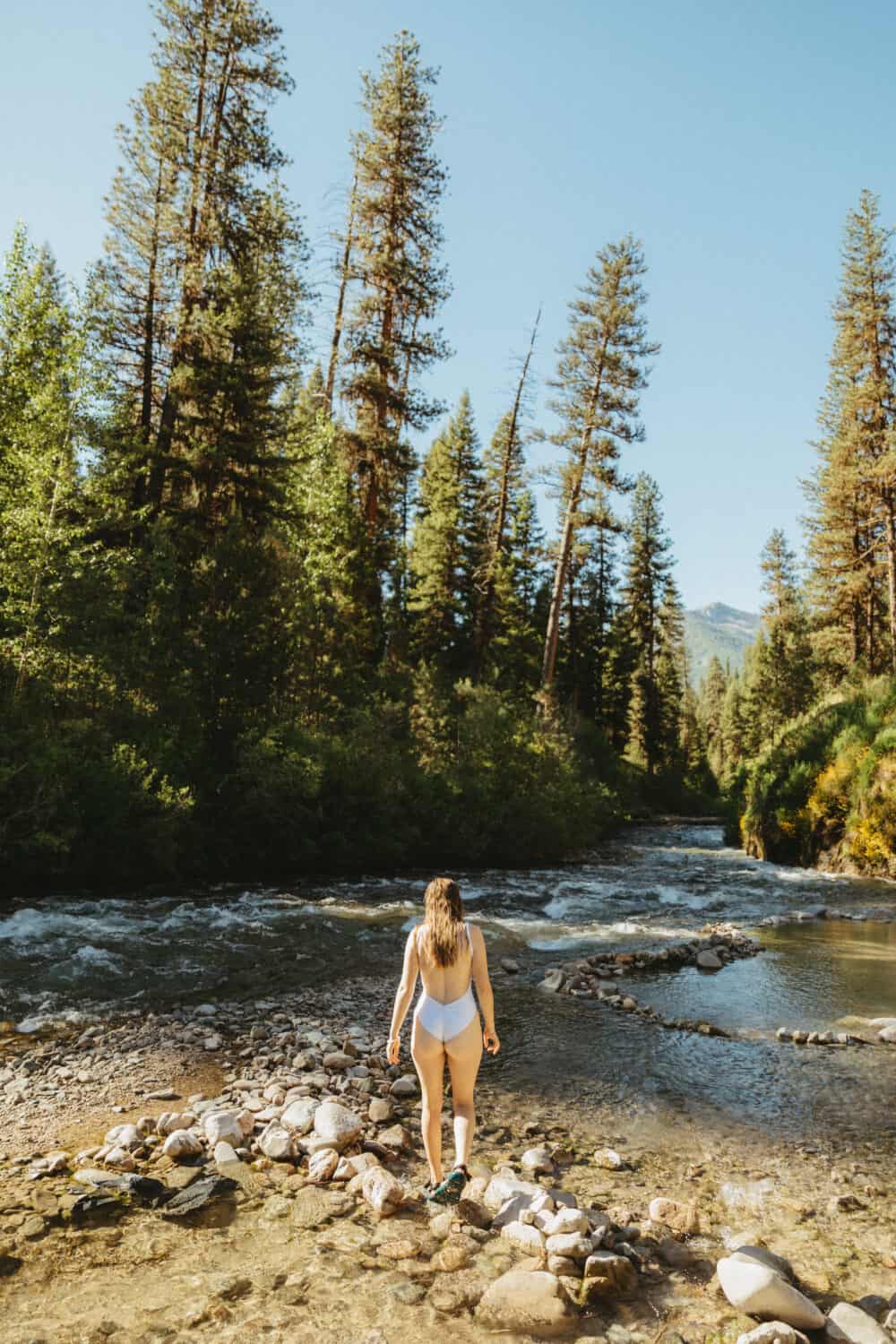
Where can you find natural hot springs on the west coast?
Lucky for you, we’re kind of obsessed with Pacific Northwest hot springs!
Below, you’ll find a list of our recommended natural hot springs found in Washington, Oregon, Idaho, California, and British Columbia.
Natural hot springs in Idaho
- Bonneville Hot Springs
- Rocky Canyon Hot Springs
- Sunbeam Hot Springs
- Jerry Johnson Hot Springs
- Pine Flats Hot Springs
- Trail Creek Hot Springs
- Boat Box Hot Springs
- Goldbug Hot Springs
- Burgdorf Hot Springs
- The Springs in Idaho City
- Kirkham Hot Springs
Natural hot springs in Washington
Read the full list: Gorgeous hot springs in Washington (with directions)
Natural Hot Springs in Oregon
Read our blog post on natural Oregon hot springs!
Natural Hot Springs in California
Natural Hot Springs in Montana
Natural Hot Springs in British Columbia
What are some facts about natural hot springs that we didn’t cover? Tell us in the comments below, and we’ll add them to the list!
